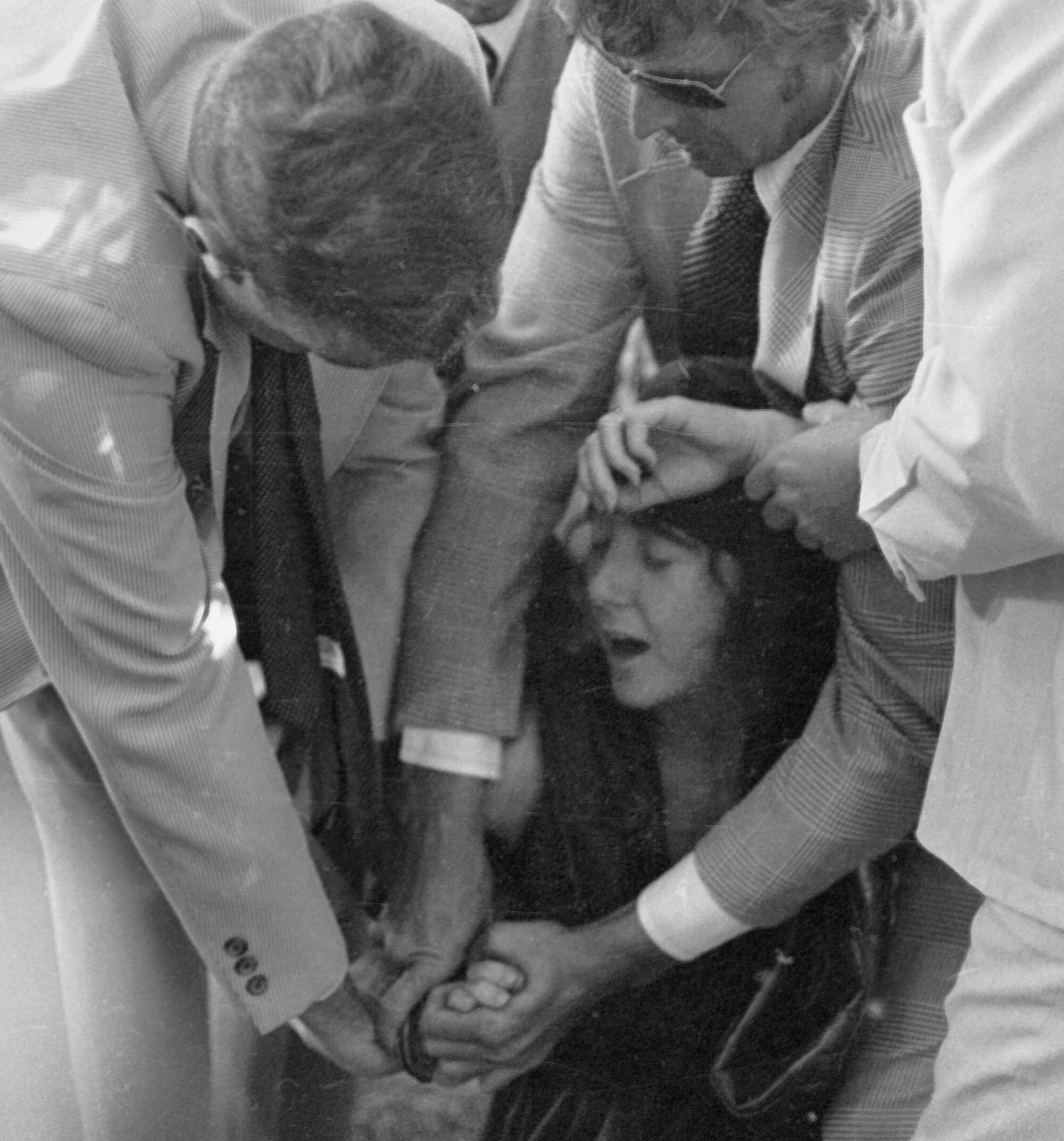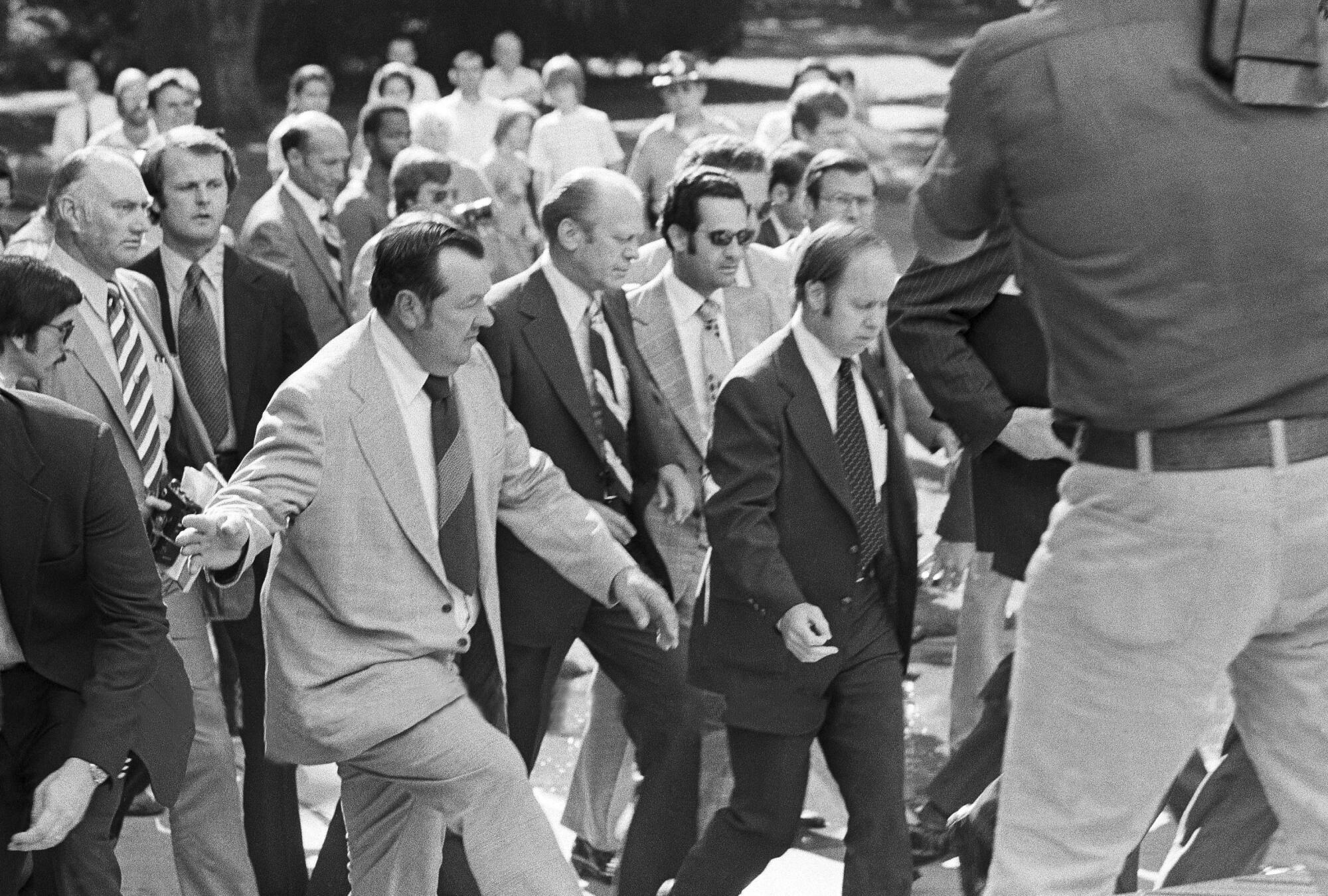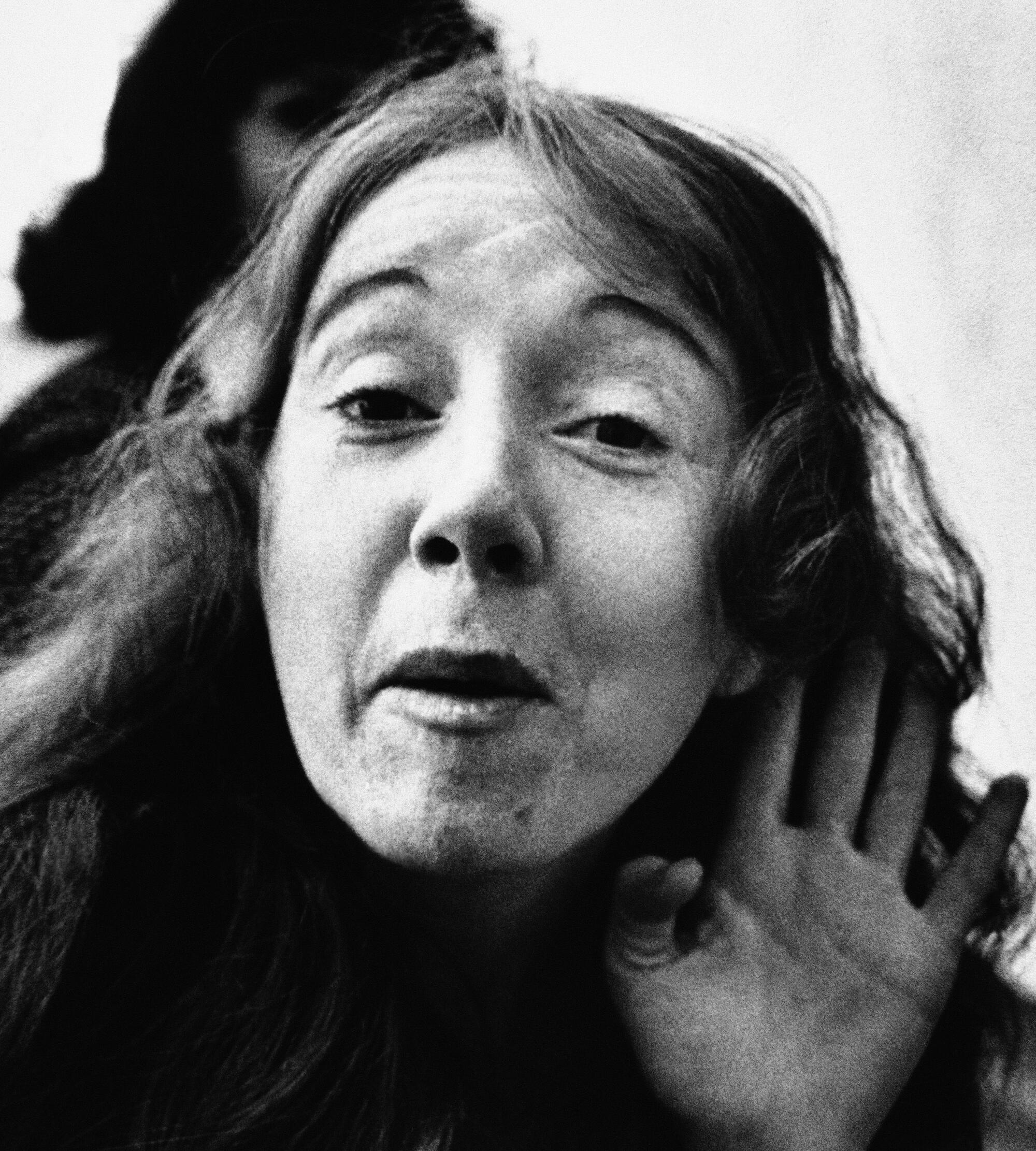She was one of Charles Manson's earliest disciples, a skinny flower child who spoke passionately about LSD and redwood trees, but one day in 1975 she went to meet the president with a loaded gun.
Lynette “Squeaky” Fromm, 26, was living in an attic room in an old Victorian building on P Street, a few blocks from the Sacramento State Capitol, for $100 a month. She had moved to the city to be closer to Manson, who gained notoriety for a string of robberies and murders in Los Angeles and who had been imprisoned for a time in nearby Folsom.
Although Fromm did not seem particularly hostile toward President Ford, who represented an establishment she and the Manson family despised, she circulated apocalyptic news releases, and in an Associated Press interview that summer she predicted a holocaust, citing two of Manson's crime scenes and the Vietnam massacre.

In this series, Christopher Goffard looks back at past crimes in and around Los Angeles, from the famous to the forgotten, the significant to the unknown, digging through archives and the memories of those who were there.
“If the Nixon reality continues to run the country outside the law, under the new face of Ford, our house will be bloodier than the Tate-LaBianca house and Son Lai Village combined,” she said.
The Secret Service then, and now, had a long list of people who posed potential threats to the president, and despite his threatening statements, Fromm's name was not on it.
She waited quietly near an orange tree in Capitol Park at about 10 a.m. on September 5. She wore a hand-sewn Little Red Riding Hood-style cape that was supposed to symbolize her new ascetic lifestyle of sacrifice and activism. At her leg, beneath her dress, was a makeshift holster containing a borrowed .45-caliber handgun designed for military use.
Fresh from speaking to a group of business leaders at breakfast, Mr. Ford left the Senator Hotel and crossed the street to the park, where he was going to visit Gov. Jerry Brown in his office, but he only made it about 150 yards before hundreds of people gathered to see him and shake his hand.

Secret Service agents handcuffed Lynette “Squeaky” Fromm after she pointed a gun at President Ford during a visit to the State Capitol in 1975.
(Associated Press)
Karen Skelton, who was 14 at the time and had skipped school to see the president, recalled the crowd being three or four deep, with Fromm a few feet ahead of her to her right.
“I thought it was kind of odd because she was wearing a red robe,” Skelton told The Times in a recent interview. “At one point she looked around, she looked up and she said, 'Oh my, what a beautiful day.'”
The president decided not to go to the Capitol in an armored vehicle, and instead Secret Service agent Larry Buendorf, 37, became part of the security team accompanying the president on foot.
“Instead of a motorcade, he said, 'Let's walk,'” Buendorf recalled this month. “It was unplanned, so everyone scrambled to prepare as best they could. There were a lot of people lined up on the sidewalk. He just walked along, shaking hands. I was right on his shoulder, making sure no one held on too long or took their watch. I was focused on his outstretched hand.”
Fromm then saw a .45 caliber gun in her hand, pointed at the president. He stepped in front of Ford and grabbed the gun. Ford was rushed to safety and Fromm was pushed against a tree and handcuffed. Witnesses heard her scream, “The gun didn't fire” and “He's not a government employee.”
Somehow, Buendorf's hands had been cut; it's unclear exactly how.
Investigators did not find any bullets in the chamber of the gun, but they did find four rounds in the magazine.
“When you pull the slide, it loads. If her gun was already loaded, I don't think I would have been able to stop it in time. It would have gone through me and the president,” Buendorf said.

After an assassination attempt occurred outside the California State Capitol, President Ford was hurriedly evacuated to safety.
(Associated Press)
Reporters gathered at the apartment where Fromm shared with another Manson follower, Sandy Good, who warned of a group called the International People's Court of Retribution, which he said would bring death to corporate leaders and politicians.
“Thousands of assassins will storm into your bedroom with butcher knives,” she said. “Those who are killing the planet deserve to die.”
Investigators found no evidence of a widespread conspiracy to kill Ford or that Manson gave the order to do so while incarcerated.
Still, Manson's former prosecutor, Stephen Kaye, has long suspected that Manson may have tipped her off and encouraged her, perhaps through an intermediary, to gain further notoriety.
“There's no way Squeaky would have come up with that on her own,” he told The Times, describing her as a “space pilot.”
“Manson loved having himself and his family in the news,” he added.

Fromm, who grew up in an upper-middle-class Redondo Beach family as the daughter of an aeronautical engineer, was kicked out of her home as a teenager and met Manson in Venice Beach in 1967. Manson called himself “the gardener” and looked after the lost flower children. In her autobiography, “Reflections,” Fromm wrote that “Charlie and LSD stand out as influential forces in her life.”
In his chronicle of the Manson murders, Helter Skelter, prosecutor Vincent Bugliosi wrote that Fromm was perpetually smiling, had a “girlish air” and exuded the “contentment” of a religious fanatic. “Charlie is love” was her mantra. At Spahn Ranch near Chatsworth, Manson put Fromm in charge of the care of an elderly, blind owner who had allowed the Manson clan to live on his land and, according to Bugliosi's account, enjoyed the sexual attentions of female followers.
As Family leader in Manson's absence, she weaved her own red hair and helped embroider an elaborate ceremonial vest for Manson. In the 1973 documentary “Manson,” Fromm posed with a rifle and a dagger, proclaimed Manson to be God, and said she would be willing to give her life for him.
“Anyone can kill anyone,” she said.

Undated photo of Spahn Ranch.
(UPI)
Manson did not order Fromm to accompany the gang of perpetrators of the Tate-LaBianca murders in August 1969, but during the trial she led a prayer vigil outside the justice courthouse in downtown Los Angeles and wore an X on her forehead as a sign of solidarity.
“After the trial, as I was walking out to the parking lot, Squeaky and Sandy came up behind me and said they were going to do to my house what they did to the Tate house,” said former prosecutor Kaye. “We all know what happened at the Tate house.”
When Fromm was charged with trying to kill Ford, he asked a federal judge to stop the cutting.
“The important thing is the redwoods,” Fromm said. “We want to protect the redwoods. Do you understand that this is like cutting off an arm or a leg?” she added. “The gun is pointed at you. It's up to you to fire or not.”
During her trial, she asked to have Manson called to testify in court, but the judge refused. At one point, she threw an apple at the prosecutor. The defense tried to prove that she had never intended to fire the .45 caliber gun by showing that she had taken marksmanship training at a shooting range and knew how to handle firearms.
“The government was very concerned that she might be convicted of assault rather than attempted murder because there was evidence that she was very familiar with guns,” said journalist Jess Brabin, author of “Squeaky: The Life and Times of Lynette Alice Fromm.”
She was convicted of attempting to murder Ford and received a life sentence. In 1987, after hearing rumors that Manson was dying of cancer, she says she escaped from a minimum-security federal prison in West Virginia in the hopes of being closer to Manson. She was arrested two miles away. She was paroled in 2009, at age 60.

Lynette “Squeaky” Fromm waved to the cameras as she arrived at the federal courthouse in Sacramento in 1975.
(Associated Press)
Brabin said that when he interviewed Fromm, who maintained a sort of religious faith in Manson until his death, Fromm told him he went to the park that day not knowing what he would do.
“she [Ford] “Either way, she was very angry about the system and the destruction of the environment. Ford was coming to Sacramento to speak to businessmen, and she felt he was destroying the sequoias,” Bravin said.
















